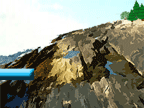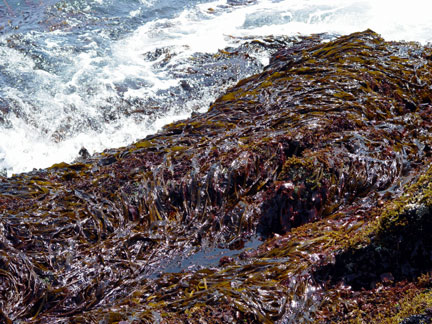 |
||||||||||||||||
|
When the lowest of low tides pulls the water away from the subtidal region, a band of kelp is often exposed for a short period of time. The kelp are large species of brown algae that grow in dense forests or beds in the subtidal region. They are fast growing algae and create important habitat areas to invertebrates and fish species. Unlike other algae species, the kelps' growing season is the winter time, because of the high nutrient levels created by the mixing of coastal waters by winter storms. The kelp also adds new growth between the stipe and the blade, instead of at the blade tip. Strong winter storms cause erosion at the tip of the blade from the heavy wave action The new growth, lower on the thallus compensates for this erosional loss. The anatomy of kelp is similar to other algae. It has a holdfast that anchors it to the substrate, a stem-like stipe which is hollow to offer buoyancy, and a blade. It is the blade that displays the features that distinguish most kelps from one another. |
||||||||||||||||
|
||||||||||||||||
|
||||||||||||||||



